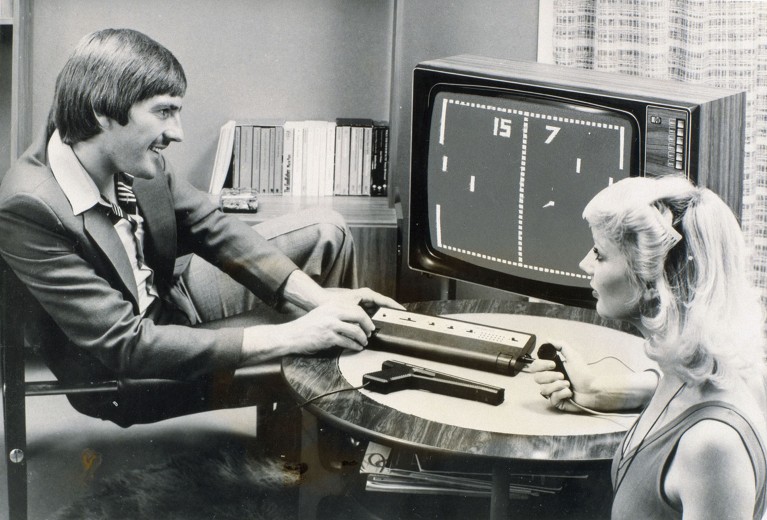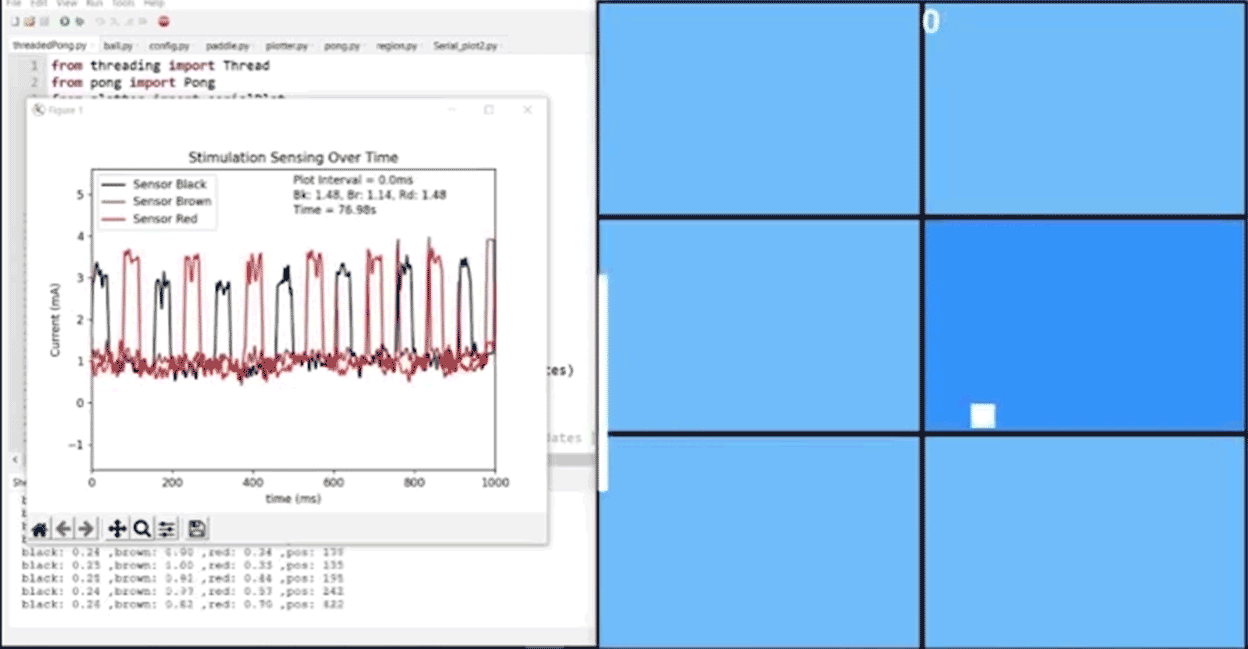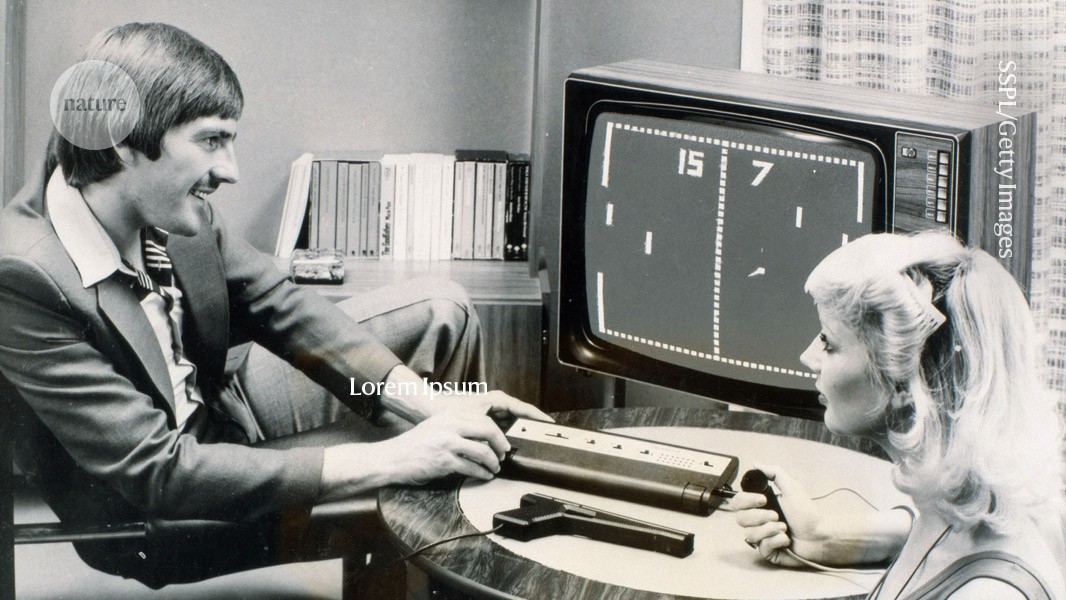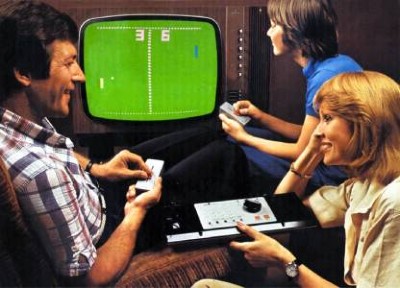
Pong was first played by humans in the 1970s.Credit: SSPL/Getty Images
A basic artificial intelligence (AI) system made of a jelly-like material hooked up to electrodes can ‘learn’ how to play the classic video game Pong and improve over time, according to a study published today1.
The results are a first step towards demonstrating that synthetic materials can use a basic form of ‘memory’ to boost performance, says Brett Kagan, chief scientific officer at Cortical Labs in Melbourne, Australia. “The system demonstrates memory in a similar way that a river bed records a memory of a river,” he says.
Neurons in a dish learn to play Pong — what’s next?
In 2022, Kagan and his colleagues showed2 that a system made of neurons in a dish — known as DishBrain — can learn to play the table-tennis-like video game through electrical stimulation. Inspired by this work, Yoshikatsu Hayashi, a biomedical engineer at the University of Reading, UK, and his colleagues wondered whether a non-biological material could also master Pong.
Hayashi and his colleagues turned to hydrogels — jelly-like materials that are used for a variety of applications, such as components for soft robots — that contained charged particles called ions. When this type of hydrogel is electrically stimulated, the ions move through the material and drag water molecules along with them, causing the hydrogel to change its shape. This change in the distribution of ions influences the next set of particle arrangements, says Hayashi. “It’s like a physical memory.”

A hydrogel improved its performance in the game over 24 minutes.Credit: Strong et al./Cell Reports Physical Science
To test whether this ‘memory’ could enable the hydrogel to play Pong, the researchers used electrodes to connect the material to the game on a computer. The game was divided into a grid of six squares that corresponded to six pairs of electrodes. Every time the ball moved through one of the squares, the corresponding electrodes sent an electrical signal to the hydrogel, causing the ions to change position. Then, sensing electrodes measured the electrical current of the rearranged ions and relayed this information back to the computer, which it interpreted as a command to move the game paddle into a new position. Over time, this formed a basic ‘memory’ because the ions’ movement was affected by their past rearrangements.
Quick learner
At first, the hydrogel hit the ball about half of the time, but it increased its hit rate to 60% in around 24 minutes, indicating that the material updates its ‘memory’ of the ball’s movement using the pattern of ions. The improved performance also resulted in longer rallies — the periods when the ball is in play.
The researchers conducted control experiments that involved feeding the hydrogel the wrong information about the ball’s position or making it operate ‘blind’ by not stimulating it at all. That meant the positions of the gel’s ions did not accurately reflect the game on the screen. The hydrogel’s Pong play showed no signs of improvement under these conditions, suggesting that it gets better only when fed the correct information.
The hydrogel didn’t master Pong as quickly as DishBrain, which took less than 20 minutes to perform at its best. “Hydrogels are a much simpler system,” says Hayashi. But he adds that the results suggest that hydrogels have further computational abilities that could help researchers to develop more efficient algorithms.
“The authors took a creative approach to try to adapt concepts from neuroscience to a more physical-based system,” says Kagan. But more work needs to be done to show that hydrogels can truly ‘learn’, he adds.



